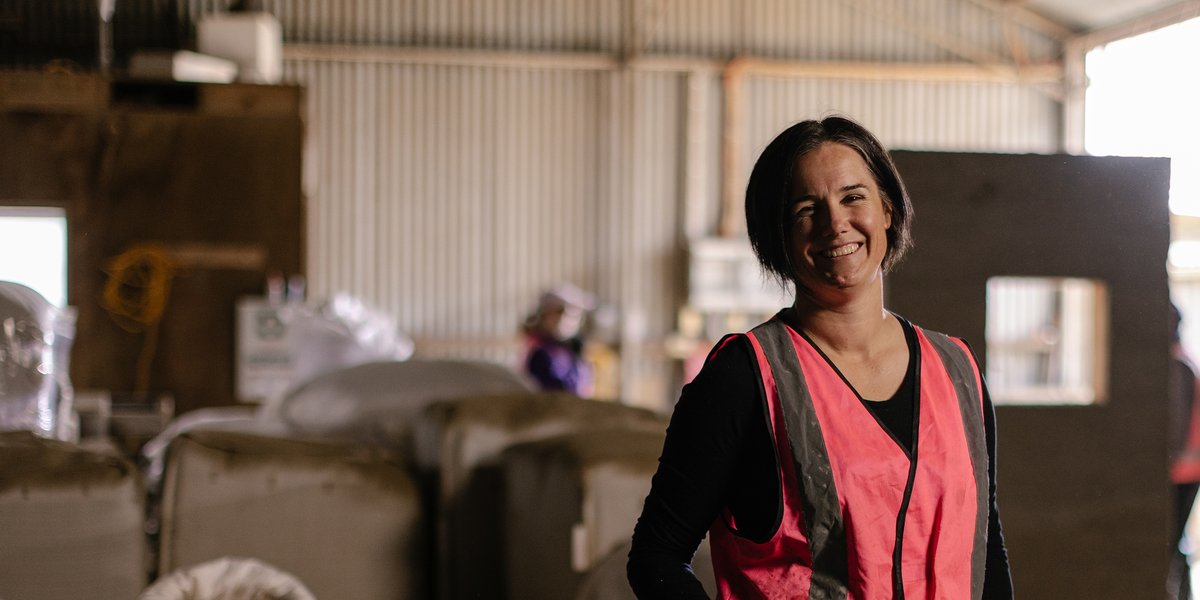Royce Smith
"The turbines are like part of the furniture now... but I do take a bit of time, especially on a nice day, to look out across it and think, ‘Yeah, we’ve done something good.'"
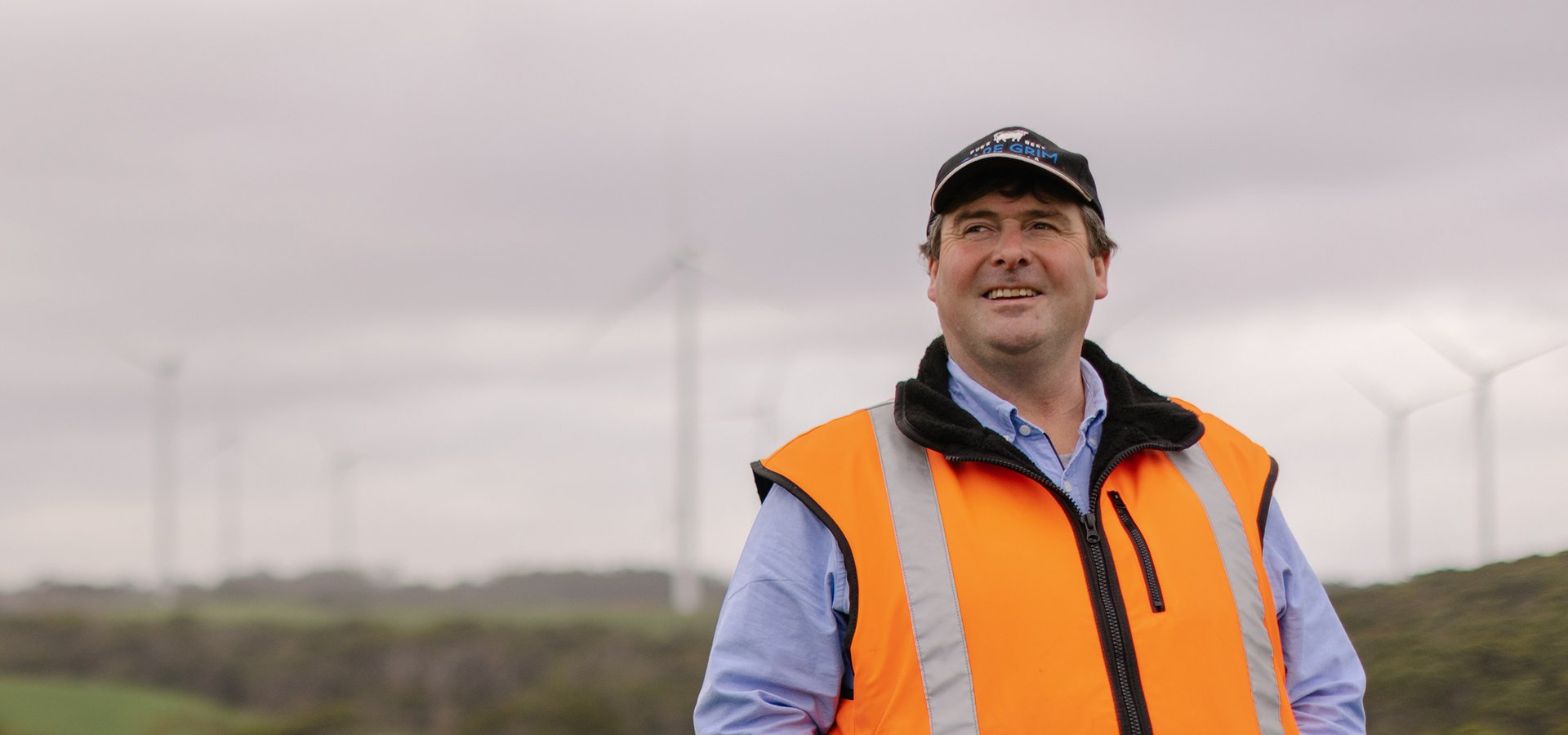
"The very first thing we did was go and knock on everyone’s door at Granville Harbour to say ‘This is what we’re looking at doing. We kept the community informed throughout the whole process."
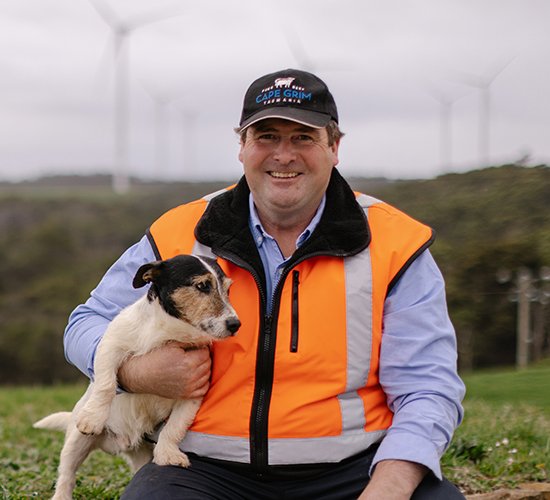
When Royce Smith’s grandfather founded a cattle farm on Tasmania’s west coast in the 1960s, overlooking a rugged, rocky headland with crashing waves below, he could not have imagined what it would look like sixty years later.
It still overlooks the ocean, battered by the wild roaring forties, and it is still a farm, with 1800 contented cows. But these days, thanks to Royce’s willingness to take a risk, they graze in the shadows of 31 turbines, each close to 200 metres tall. The Granville Harbour Wind Farm generates around 400,000 megawatt hours of clean, renewable energy every year — enough to power around 46,000 homes.
“My passion was always beef,” explains Royce. “But now we’ve been able to diversify. I thought there was a good opportunity to have a wind farm here, knowing it was a well-positioned site. Over a couple of beers in the shed with a friend of mine, Alex Simpson, we just launched into it on a handshake deal. I guess the family has always had a bit of a thing with renewable energy though; my father worked on the Reece Dam in the early days, which is only about 12 kilometres north of us.”
When Royce and Alex shook hands on their deal in 2012, neither of them had any experience in the renewable energy sector. Royce had grown up living and working on the family farm, and Alex had spent twenty years in the army before returning to North West Tasmania as a manager with Tasmania Parks and Wildlife Service.
However, the two friends were keen to work through the process of securing approvals that would take the wind farm project from inception all the way to operation. They would need to study a new business. They would need patience. They would need a bit of luck.
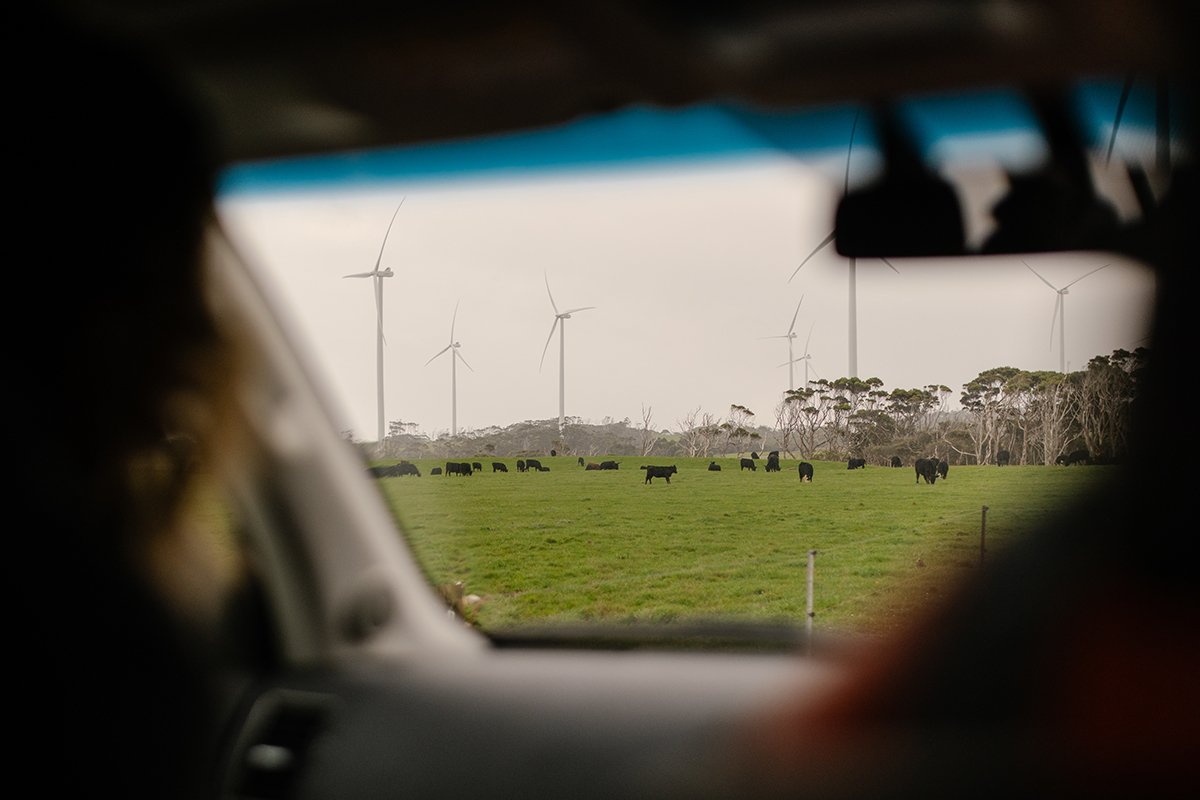
“We started with the federal approval process, then state, and finally local council,” says Royce. “We met a lot of good people on the way who helped us out, and we got approval for the project in two years. There was a lot to learn all the way through the process, from Aboriginal heritage through to birds and community issues, but we also did a lot of the surveying work upfront. I always said if it’s not going to stack up environmentally, we’d never build it.”
Thankfully, the plans for the wind farm did stack up — both environmentally and economically — and in 2017, Royce and Alex reached an agreement with Hydro Tasmania to purchase the power. In early 2018, Royce and Alex on-sold the development approvals for Granville Harbour Wind Farm to Palisade Investment Partners and, with the sale complete, construction began on the site in mid-2018.
“Once we’d negotiated with Hydro Tasmania, we had almost fifty companies interested in the project,” explains Royce. “We ended up settling with an Australian company that looks after superannuation funds. They raised the $280 million to build and operate it – but I still own the land, and they lease sections of it for the wind farm. There’s a six-man team that looks after the wind farm and we work together on things like roads and fencing. It was pretty new for me moving from being a humble beef farmer on the most isolated farm in Tasmania to now having the farm diversified like that.”
The construction phase of the wind farm, which took place from 2018 to 2020, was an enormous, complicated project that required as many as 180 workers on the site at peak times. The team had to construct 15 kilometres of new roads in order to bring in the tower sections and turbine blades, as well as undertaking major earthworks and laying great distances of underground cables. Each individual turbine required a solid foundation, built using 750 cubic metres of concrete and 70 tonnes of steel, to ensure stability in the high winds and weathered sandstone ground.
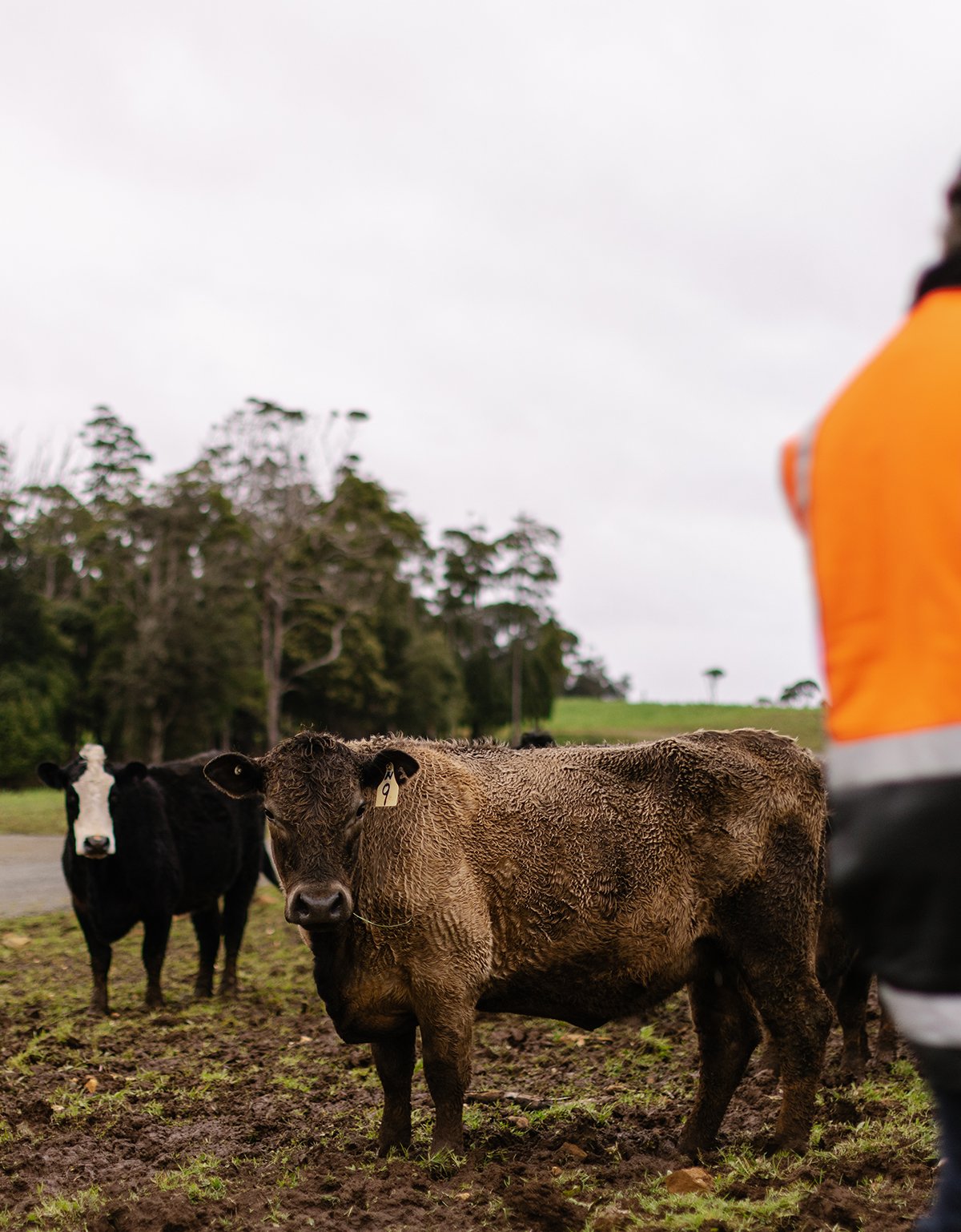
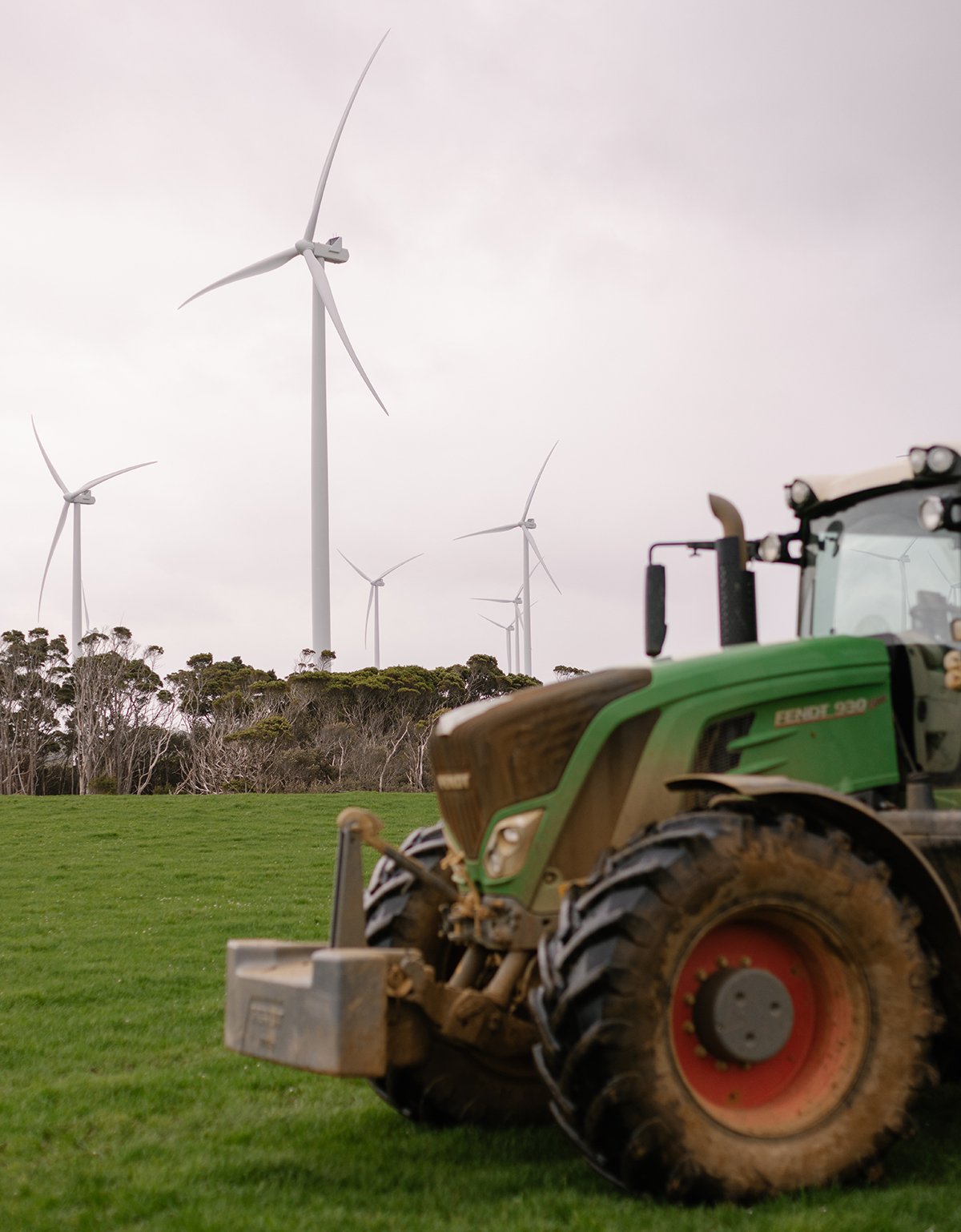
I do take a bit of time, especially on a nice day, to look out across [the farm] and think ‘Yeah, we’ve done something good.’
“For us as farmers, that was probably the worst period,” says Royce. “We had to manage the cattle around all the dump trucks and whatnot. But it all worked out in the end, and the final result is worth it. I know it benefited some of the local towns like Zeehan too, for those two years, with all the extra people needing accommodation and shopping locally at the supermarket.”
One of the key factors that has contributed to the success of the wind farm, which took Tasmania to 100% net self-sufficiency in renewable electricity when it came online in late 2020, is the emphasis Royce and Alex placed on community consultation. As West Coast locals themselves, they knew it was crucial to have their neighbours onboard with the idea from the outset.
“The very first thing we did was go and knock on everyone’s door at Granville Harbour to say ‘This is what we’re looking at doing,’” says Royce. “We showed everyone the map and explained that we would be keeping the wind farm on the northern half of the farm property, which is about 2km from the township. Most of the Granville residents are good friends, but there’s a few I didn’t know. We always kept the community informed throughout the whole process, and we’ve never had any complaints.”
As the landowner and developer, Royce was also able to choose an owner-operator for the wind farm that would continue to prioritise community engagement. Since the wind farm opened, the owners have established a community grants program that provides up to $20,000 each year for local initiatives, as well as an additional $50,000 grant program to recognise the significant contributions of the West Coast’s Volunteer Emergency Services.
With Granville Harbour Wind Farm now up and running, Royce and Alex are now starting to look at the feasibility of other renewable energy projects around Tasmania. But for now, at least, the rugged, windswept West Coast remains home.
“I’ve never thought about moving,” says Royce. “I still like farming and I still like living at Granville Harbour. I’ve seen this project go all the way from the dream of a wind farm right through to the end construction, and the turbines are like part of the furniture now. But I do take a bit of time, especially on a nice day, to look out across it and think ‘Yeah, we’ve done something good.’”

We worked with north west Tasmanian photographers Moon Cheese Studio and southern Tasmanian writer Ruth Dawkins for this Tasmanian story.
Read about more Tasmanians
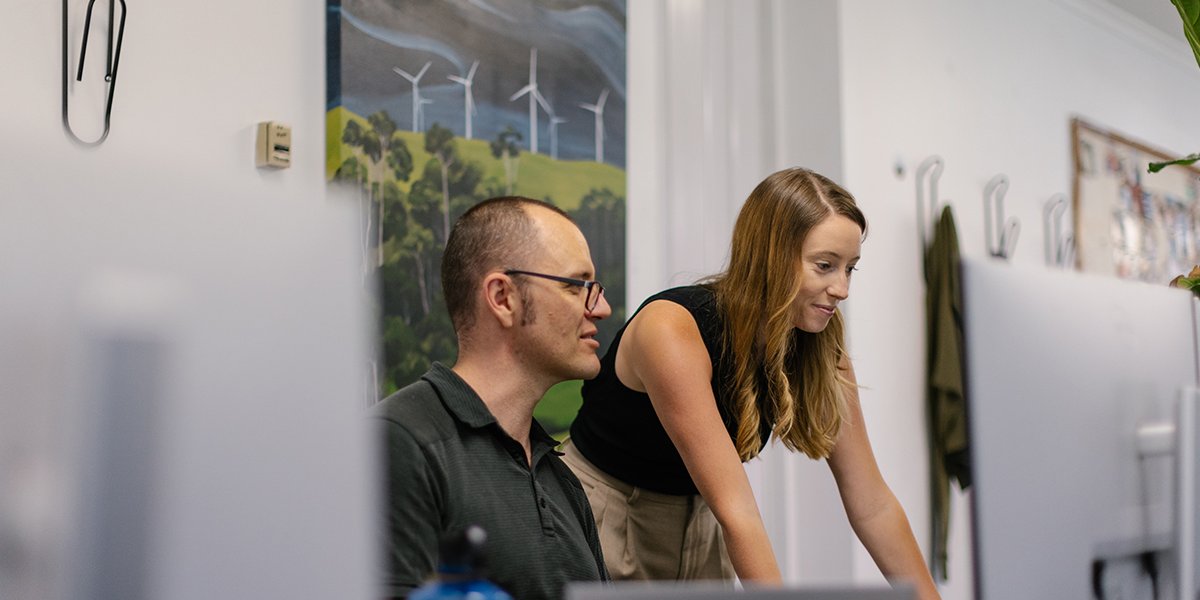
Jess Richmond
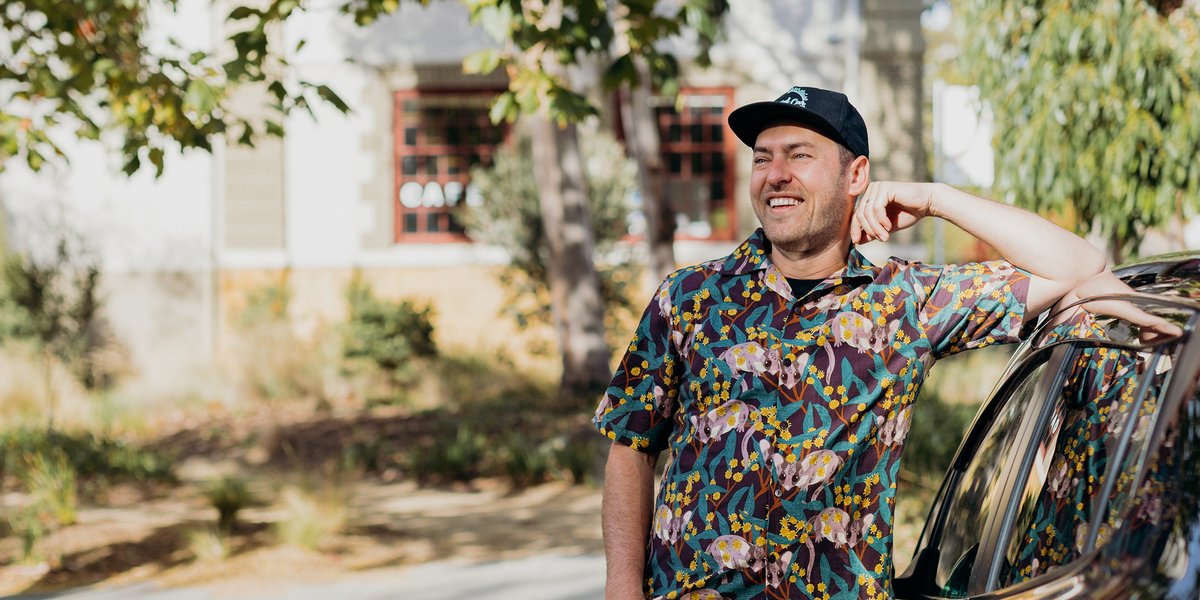
Anthony Broese van Groenou
